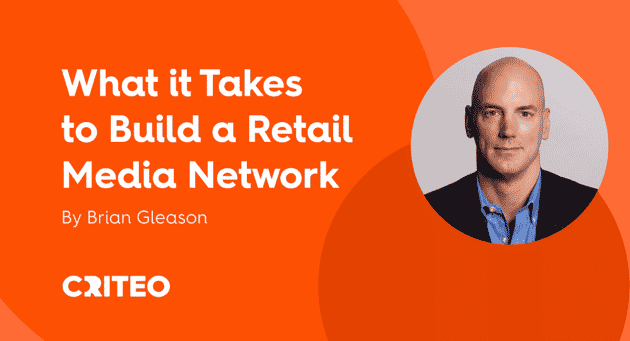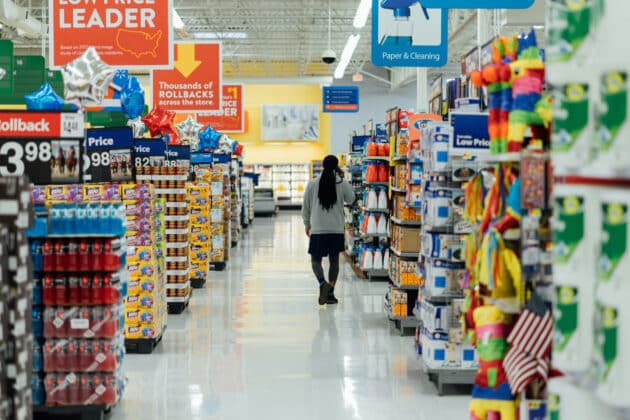For most people, hearing names of retail leaders like Target, Best Buy, Macy’s, and Carrefour makes them think of the goods these retailers provide to the consumers who need them. But when I — and people in the advertising business — hear these names, the first thought is of the massive media monetization opportunity they captured. These world-class retailers capitalized on the growth of retail media by turning their own ecommerce sites into media properties, offering highly visible and engaging ad inventory to their brand partners.
While retail media has been around for over a decade on Amazon, it gained traction with retailers across many categories in the last three years due to the rise of ecommerce, and the growing need for secure, brand-safe advertising environments. It’s also propelled by the race to access durable, privacy-safe first-party data in the wake of third-party signal deprecation. These trends pushed retailers into the spotlight as media moguls by creating their own retail media networks (RMNs), such as Target’s media network, Roundel.
| What Are Retail Media Networks and How Do They Work? |
|---|
| RMNs are powerful advertising platforms that enable advertisers to leverage retailers’ first-party data and inventory to deliver highly personalized ads throughout key shopper journey moments and engage customers at their point of purchase, when they're most likely to convert--otherwise known as retail media advertising. RMNs also enable advertisers to showcase their products across channels (websites, apps, etc.) that are owned by both retailers and retailers’ third-party media partners, offering brands an expansive ad inventory to get their products in front of more high-intent customers. |
What Are the Benefits of RMNs?
Selling media is a win-win for retailers and advertisers. Retailers benefit by creating additional revenue streams while creating more personalized experiences for their customers. Advertisers benefit by gaining valuable consumer insights from retailer data, allowing them to optimize strategies and drive better results on brand-safe, digital environments. According to McKinsey, nearly 70% of advertisers see significant or somewhat better performance with RMNs than with other channels. Retail media also benefits consumers by showing them relevant products and brands based on their opted-in, first-party data from the retailer’s site.
What Do Retailers Need to Succeed?
Every retailer is different, just as every technology partner is different. Our aim at Criteo is to be adaptable and allow flexibility for each retailer to build the most appropriate monetization platform for them. Whether that means Criteo is the ad stack that powers a retailer’s own, proprietary media network, or Criteo leverages its deep, self-service user base at agencies and brands to bring retailers demand, we can customize our solutions to align to the strategy and needs of any retailer.
Becoming a RMN doesn’t happen overnight. It requires retailers to understand and create an entirely new business model, with updated operations, including new billing structures. Once a retailer is up and running with their own RMN, they can use the revenue from this new stream to offset operating costs and fund innovation — but they need to build it first. We work with many retailers who previously had zero experience in digital media, as well as some of the most experienced and sophisticated retailers on the planet, so we know what it takes for them to start monetizing — and how to usher them into retail media maturity.
Creating this type of business often requires retailers to need new, scalable technology and even new teams. They usually solve this by working with an advertising technology partner that can provide the necessary infrastructure and expertise, which shortens the time to launch compared to building the entirety of their retail media technology in house. As McKinsey notes, “Advertisers may expect managed-service capabilities, and retailers will likely benefit from partners that help deliver them, such as technology partners, content partners, sales partners, campaign-planning/buying partners, and reporting and measurement partners.”
Whether working with a technology partner or building a proprietary network, here are the table stakes for retailers who want to build a successful RMN:
1. Demand
Getting advertisers on board to buy retail media inventory is the first step. This is a new concept for many advertisers, so it’s critical for retailers to demonstrate the value of their specific audiences to brands and their agencies to ensure the demand is there. Offering retail media inventory lets retailers deepen the existing relationships they have with advertisers through new opportunities. For instance, if retailers work with a technology partner like Criteo for retail media, they can potentially access new brand and agency budgets, including national media dollars, rather than solely shopper budgets.
2. Supply
Retailers also need to consider the inventory that best meets their advertisers’ goals. This goes beyond a retailer having supply on their own website to include potentially connecting to other sources of media. By applying retailer data to additional supply, retailers help their brand partners scale retail media campaigns and access holistic reporting across the entire shopper journey. If retailers work with technology partners who can simplify the buying process for advertisers by helping them buy across different retailers, ad formats, and conventional digital publishers, this is an added draw for advertisers who want to manage and measure campaigns across retailers and sites on the open internet.
3. Engagement
Advertisers leverage retail media campaigns because they drive results for both branding and performance, but retailers need to offer diverse ad formats to achieve a brand’s specific goal across the consumer journey. For instance, a CPG advertiser may use sponsored product ads to drive quick conversions, but an electronics brand sustains appropriate engagement with a consumer who’s shopping for a new laptop through onsite or offsite display ads, rather than forcing a hasty conversion before the consumer is ready.
4. Measurement
For successful retail media campaigns, retailers need to provide advertisers with comprehensive measurement via clear and robust reporting, as well as engagement. This includes aggregate views of metrics by campaign, by category, by product, and by retailer — if running campaigns on multiple retailers. Advertisers also want the ability to tie both online and offline sales directly to campaigns and access all these reports through one central partner for maximum efficiency.
5. Flexibility
To build a RMN and to run successful retail media campaigns, both brands and retailers require flexibility. Brands need retail media solutions that offer the control and flexibility to move budgets and optimize campaigns quickly — ideally from one central point. For retailers, they need flexibility in what their retail media technology partners can provide. Some retailers have their ad technology partner power their entire RMN or leverage a combination of technology and managed service resources.
Partnering for Retail Media Success
My team at Criteo and I know that the list above is not exhaustive. It’s the cost of entry for retailers when starting their retail media businesses. With 22,000 advertiser clients, we open our retailers up to new demand and provide the most appropriate engagement model that meets both retailers’ and advertisers’ needs.
Our team works with each retailer to identify the knowns — and unknowns — and fill the gaps quickly and at scale. And that goes far beyond technical implementation, we have a true partnership with our retailers and can customize our approach to match what they need at each level of maturity in their retail media evolution. This includes driving demand and solving for ad serving, latency issues, first-party data collection, audience monetization, and much more.
We’ve been in the business of retail media at scale for more than five years and have been experts in personalization for more than 15 years. We have the massive scale of first-party, commerce data, combined with advanced AI capabilities to generate the most relevant messages and product recommendations for consumers. Criteo powers retail media networks for enterprise and niche retailers alike and will continue to deepen our expertise as we grow our Commerce Media Platform solutions.
Learn more about Criteo’s Retail Media solution, here, to find out how we’re powering the world’s retailers to become media moguls.
Unleash the full potential of retail media with our retail media guide.






















